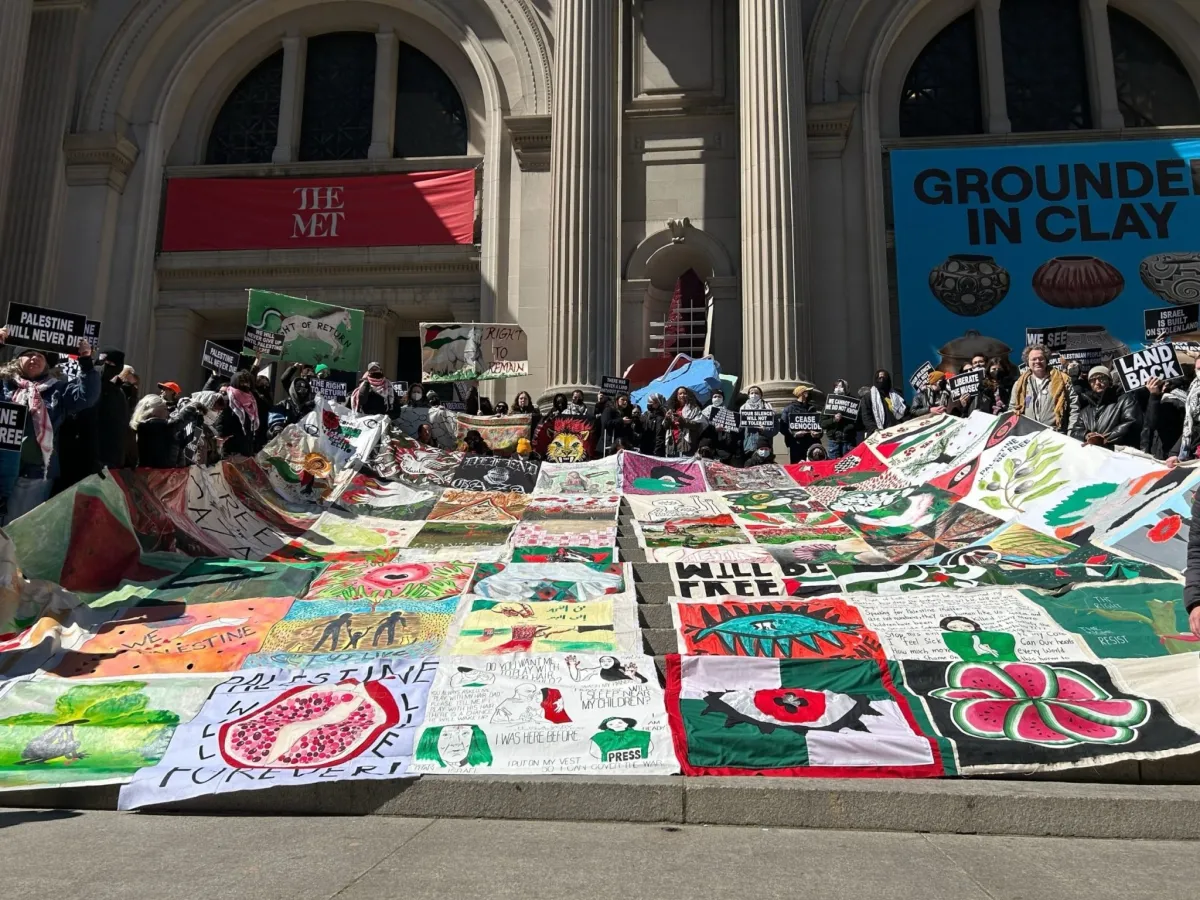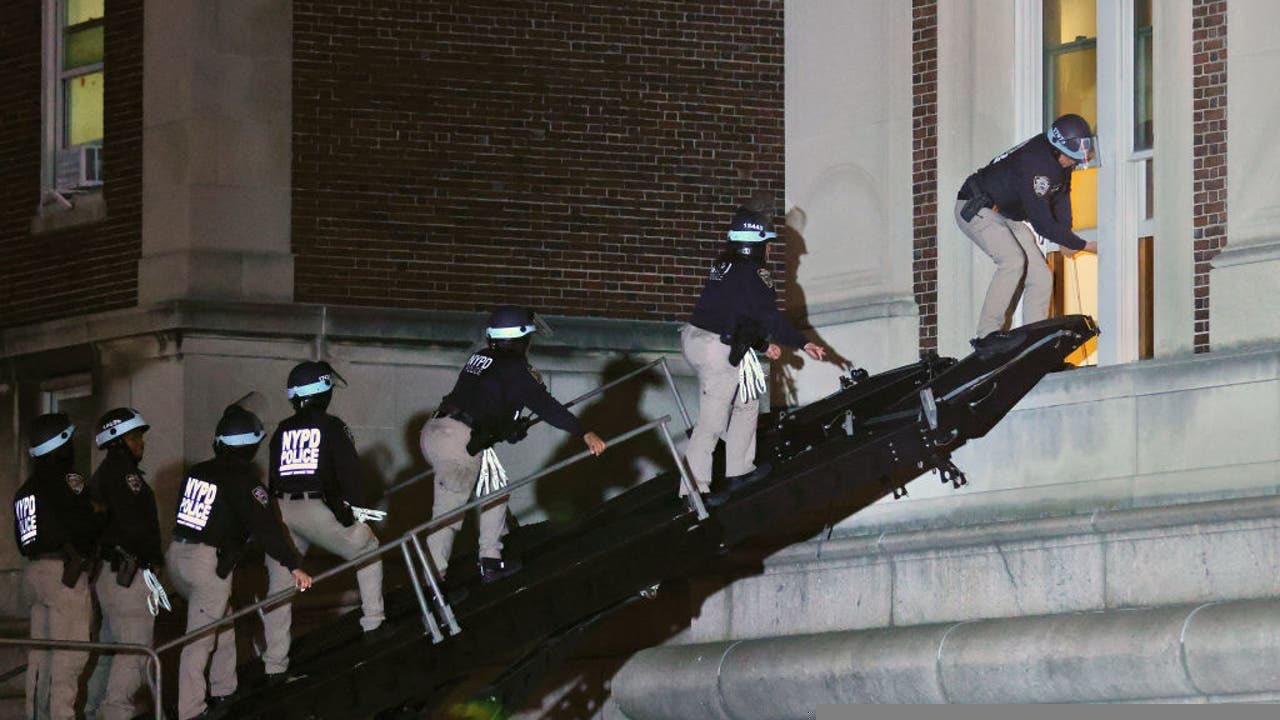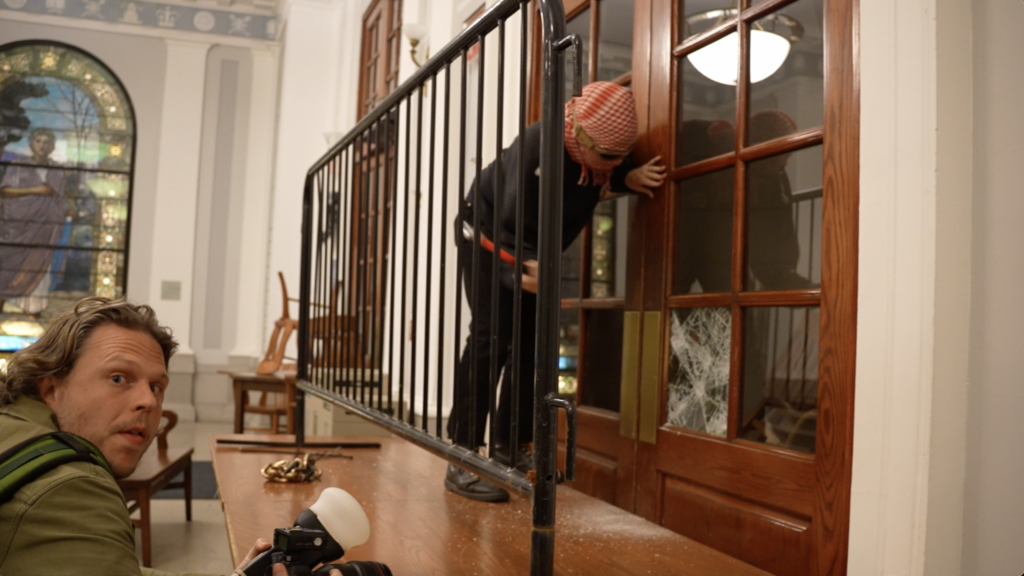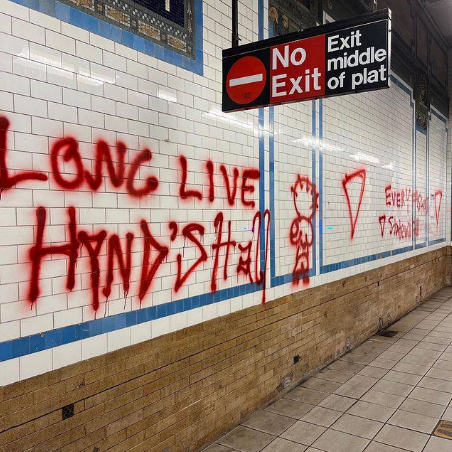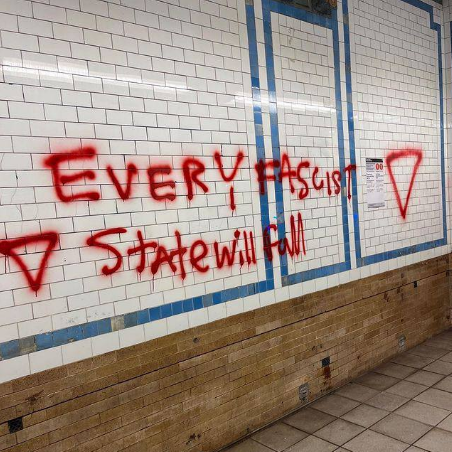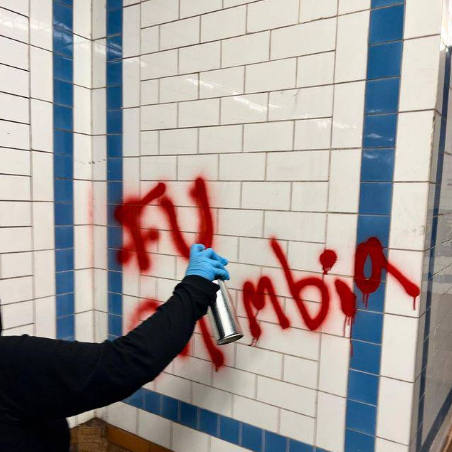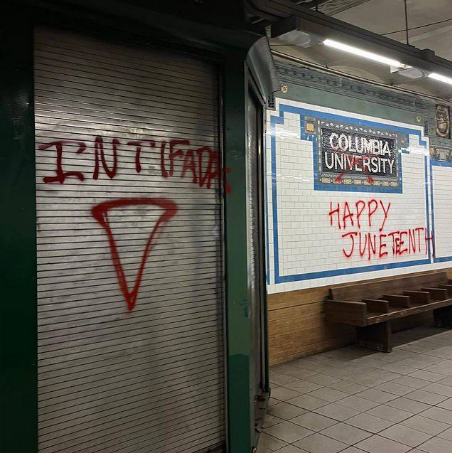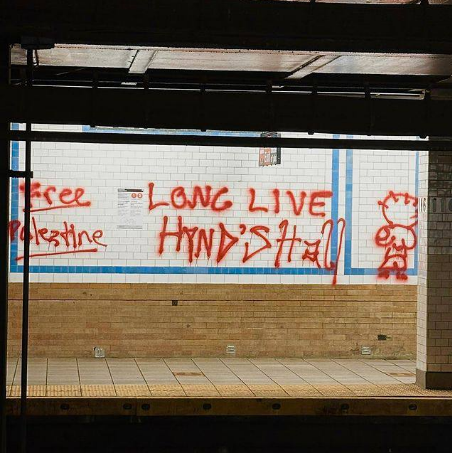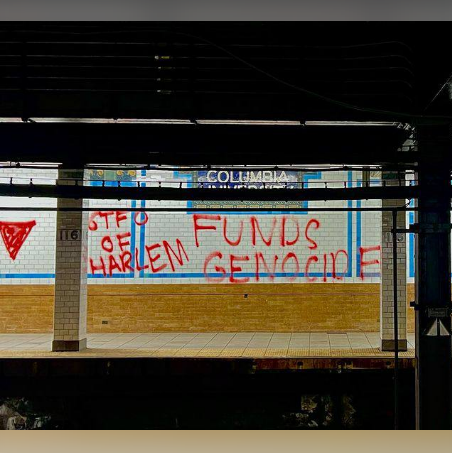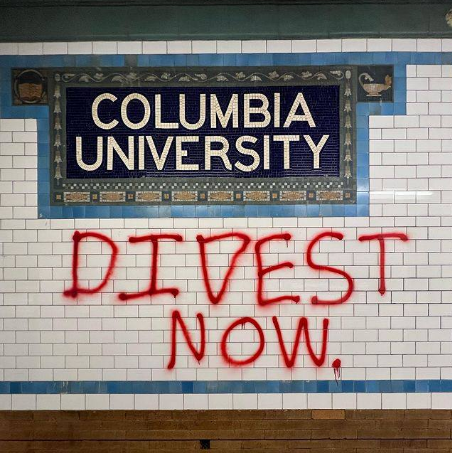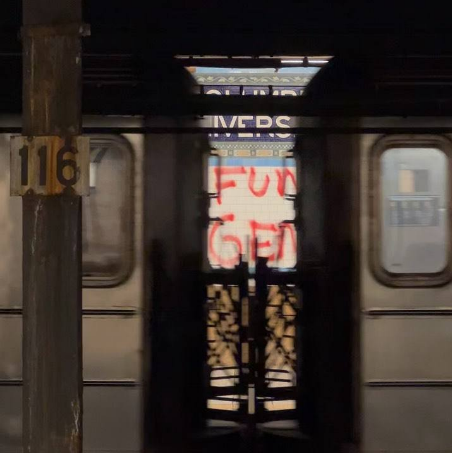Anonymous submission from Columbia:
“Im so scared. Please come.” One year ago today, these were Hind’s last words as she called for an ambulance, while Israeli forces unleashed 355 bullets murdering her as she hid in a car. One year ago, the world failed Hind. But today and everyday we owe Hind, all our martyrs, and ourselves, action.
So today we acted. Inspired by Hind, and the bravery of every Palestinian child who has faced down Israeli genocide for the last century – whether they threw a molotov at a checkpoint, a rock at a tank, or made a call for help. So long as they resist, so must we. We attacked two targets at Columbia University. First, the Kravis Columbia School of Business, one of Columbia’s most recent violent gentrification projects into Harlem, the construction of which was conditioned on the creation of Columbia’s Apartheid Global Center in “Tel Aviv”. We will not allow this land-grab to go unchallenged. Second, we attacked the School of International and Public Affairs – the first Columbia institution to expel a student for their support for Palestinian liberation, currently run by a former “Israeli intelligence officer” – Killer Keren, and staffed by Rebecca Weiner, head of the Counterterrorism Unit of the NYPD, who directed the brutal police assault on our comrades in Hind’s Hall last May. We left Hind’s call painted on SIPA, and we cemented the sewage lines of the entire building, forcing them to shut down business-as-usual.
We are not experts in what it means to take revolutionary action. We are people – just like you – who, today, chose to act. We were afraid- to be arrested, suspended, and expelled; and that is exactly the point. The goal is not to be fearless, but to recognize that to be afraid is merely a symptom of our moral clarity. We are soberly aware of what we may lose if we act, and we are soberly aware of how much more we will lose if we don’t. The most severe consequence we could face today is not expulsion or prison time- it is the knowledge that we had the opportunity to act, and, instead, chose cowardice. The most severe consequence we could face is not only to have failed Hind one year ago, but to have continued to fail her today.
So we invite you to join us. Let us identify the actions that elicit fear in us, find the people who we can be courageous with, embrace the fear, and take collective action.
As Hind’s mother watched the scene of Hind’s Hall unfold, she said “I wanted these movements and support to come while Hind was still alive and not after… but I was still happy that there’s a possibility that Hind’s cause could move and mobilize people in this world.” Let us act together and transform that possibility into a reality.
For Hind, with love and rage from Columbia.
Found on social media.


